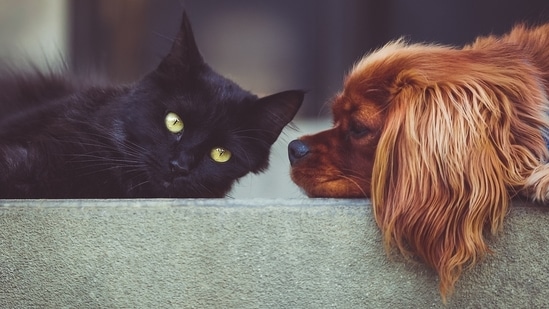
Intruder to partner-in-crime: How to introduce your new pet to your old one
2052 years ago | 139 Views
Many pet parents may believe that their solitary pet is lonely and needs a friend however, this is a misconception so, never make the mistake of abruptly introducing a new pet without proper preparation. Sometimes, pets can become territorial, especially when faced with a newcomer, making them aggressive and defensive.
Older pets might be aggressive towards the newcomer, which often is a puppy or kitten, causing stress and potential harm to the new baby and since the environment is already unfamiliar to the new pet, they are further stressed. Additional attacks from a much older animal will make them even more anxious.
Here are some ways to help acclimate your new pet to your old one and prevent nasty surprises and injuries -
Separate spaces
On the first day, it’s crucial to keep your new and old pets apart. Create a separate space for the new pet, away from your resident pet. Make it comfortable with a new bed, food, water and toys. This will help your new pet adjust to the new surroundings and scent. Meanwhile, your older pet will become familiar with the newcomer’s arrival through its scent. Any face-to-face interaction won’t shock your resident pet now.
Familiarise scent
The most crucial step to acclimate each other is through scent. Animals have a sense of smell and heavily rely on it daily. For a smooth transition, hold each other’s belongings like toys, and make sure they sniff them. This gradual exposure to each other’s scent helps to reduce stress and aggressive behaviour. Take your time and don’t rush with smell acclimatisation.
Change in space
Don’t immediately introduce the new pet, especially if it's a baby. Instead, allow your older pet to explore the new pet’s space first. Supervise this process closely to prevent any damage to the new pet’s bed and toys. As your older pet becomes habituated to the new changes in its surroundings, it will start to feel more at ease with the new situation.
Face-to-face meeting
Keep a safe distance between them during their initial interaction. Slowly and carefully reduce the distance as both pets become more comfortable. Make them sniff each other. Use a leash if necessary to help control any unanticipated aggressive behaviour before it escalates. Be observant of their body language and look for signs of emotional distress. If either pet reacts negatively, separate them and try again later. Even if the first interaction goes all well and they are playing, do not leave them unsupervised.
Reward them
Initially, after successful interactions or time spent together, reward them with belly rubs or treats (in moderation). Follow a particular routine to help both pets adjust and become used to each other. With time, patience, and love, they should bond and become inseparable siblings. If the adjustment problem persists, consult a veterinarian for help.





















